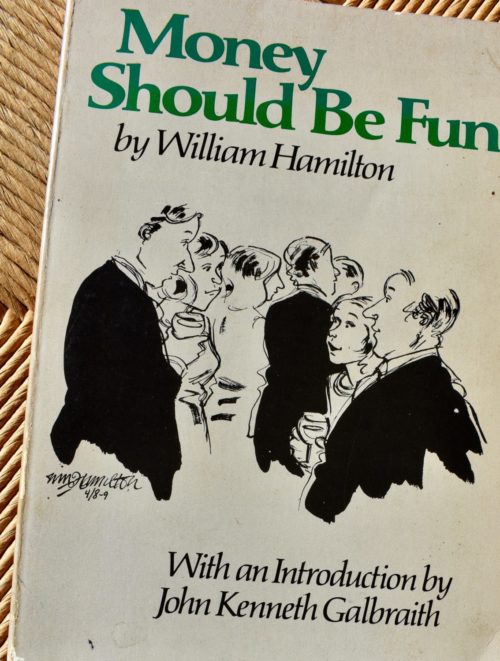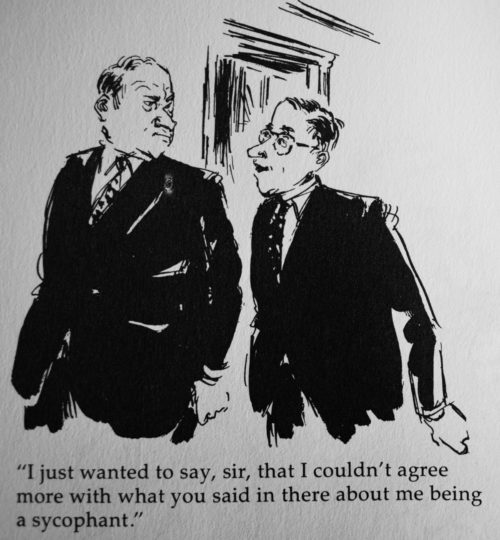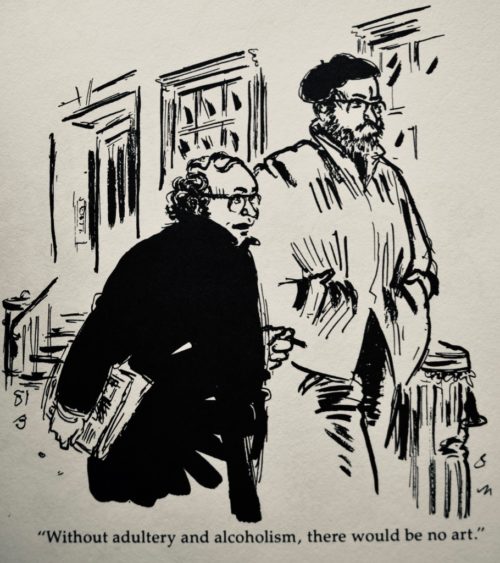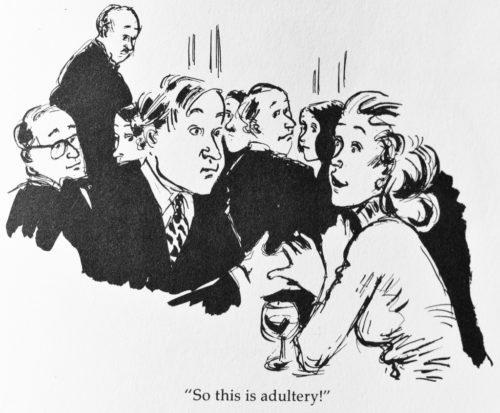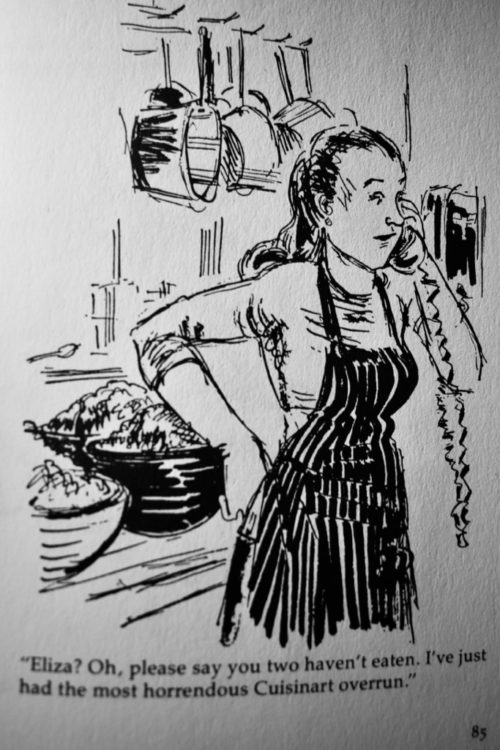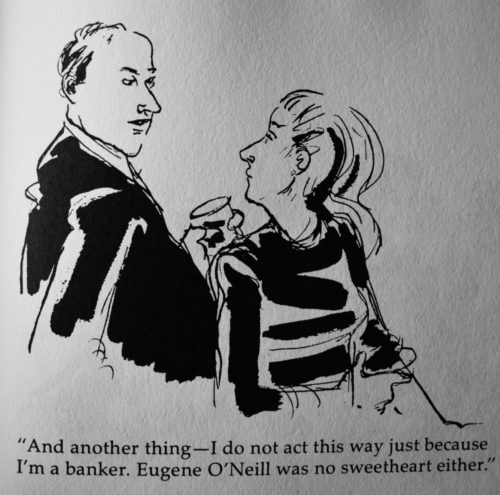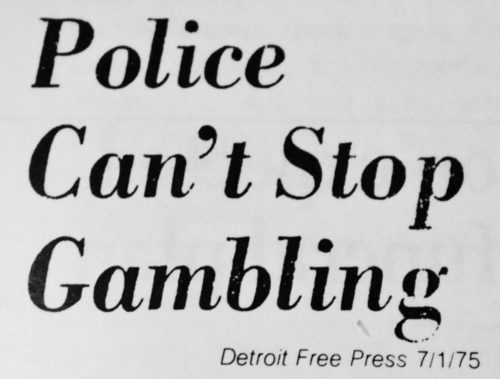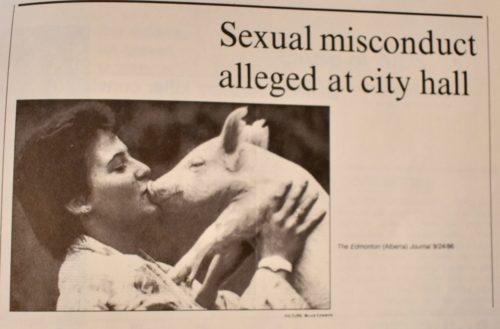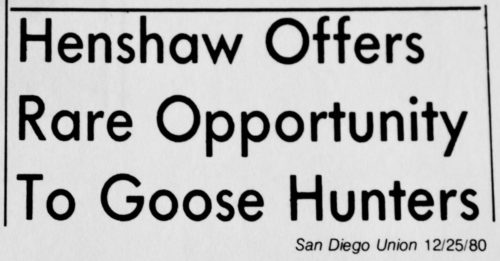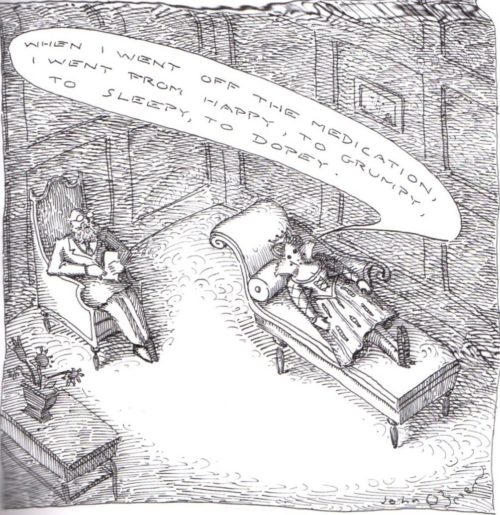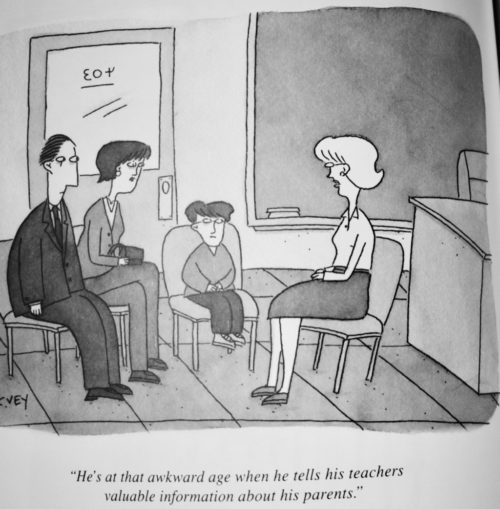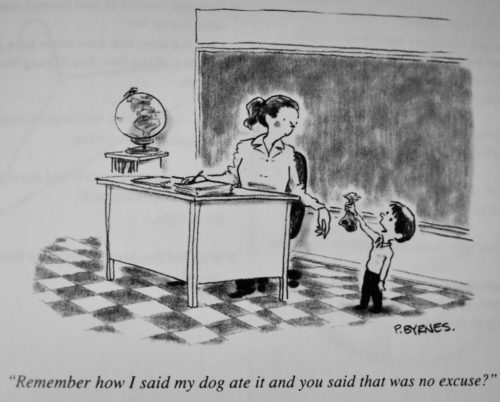Thu 27 May 2021
The question is: where to sleep?
Posted by DavidMitchell under Uncategorized
Comments Off on The question is: where to sleep?
Caveat lectorem: When readers submit comments, they are asked if they want to receive an email alert with a link to new postings on this blog. A number of people have said they do. Thank you. The link is created the moment a posting goes online. Readers who find their way here through that link can see an updated version by simply clicking on the headline above the posting.
__________________________
This week we’ll take a look at who’s been sleeping around Mitchell cabin besides Lynn, me, and our previously stray cat Newy. These days it’s not just a matter of sheltering in place but also of finding shelter.
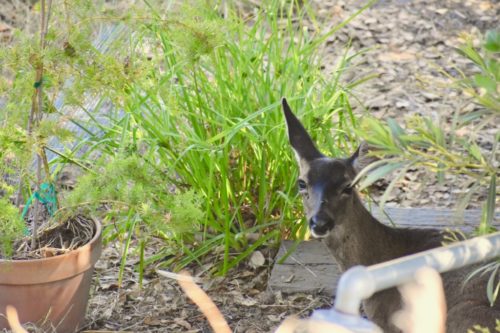
A tranquil doe. My wife Lynn found this blacktail deer sleeping on our front steps Tuesday morning. (Photo by Lynn Axelrod Mitchell)
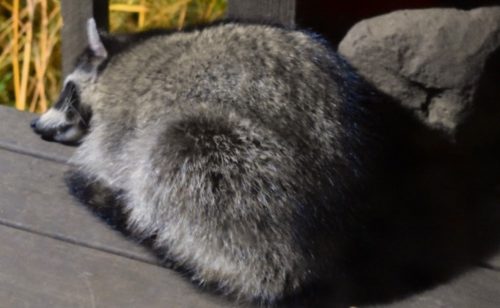
Snoozing raccoon. Early Tuesday evening I was surprised to find this raccoon sleeping on our deck quite close to our front door.
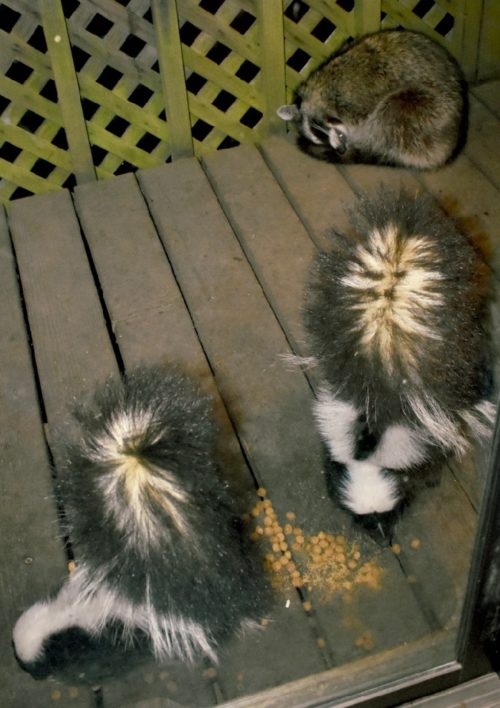
Sleeping place invaded. A short while later, another raccoon began snoozing a few feet from our kitchen door only to have two skunks show up to finish off the handfuls of kibble I’d given the raccoon. It appeared to pay only drowsy attention to the skunks and stayed put.
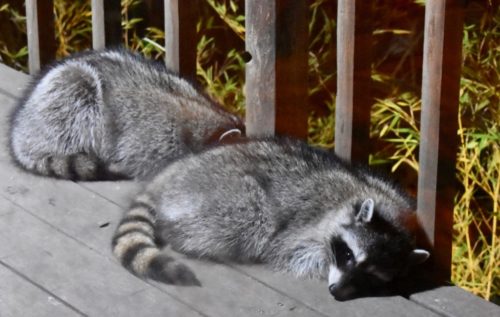
Two raccoons asleep on our front deck still later Tuesday evening. Mitchell cabin has obviously become a secure enough retreat that a variety of wildlife nap here.
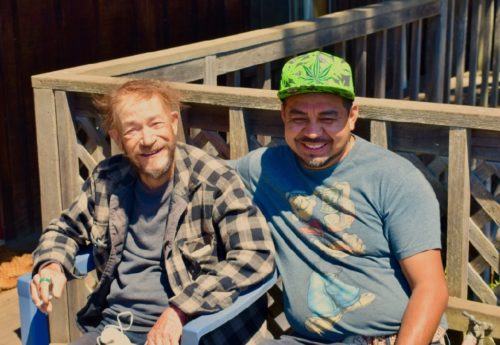
Billy Hobbs (left). Aside from his hair on a windy day, Billy is not exactly wild, but he has been homeless for more than seven years since the breakup of a 25-year marriage.
When I first met Billy, an artist, he was living on the street in Point Reyes Station. After the weather got bad in the winter of 2019-20, Lynn and I offered to let him stay in our basement. Last year I let him sleep in my second car, which I parked on Mesa Road downtown, moving it every 72 hours to comply with the law.
At present, Billy, 63, is being sheltered at Motel 6 in San Rafael, with county government picking up the tab. Wednesday afternoon, his friend Gaspar drove Billy out to Point Reyes Station so he could visit his onetime hangouts. Thank God, Billy at least for the moment has a secure place to sleep. Society too often treats the homeless as if they were all wild animals.


